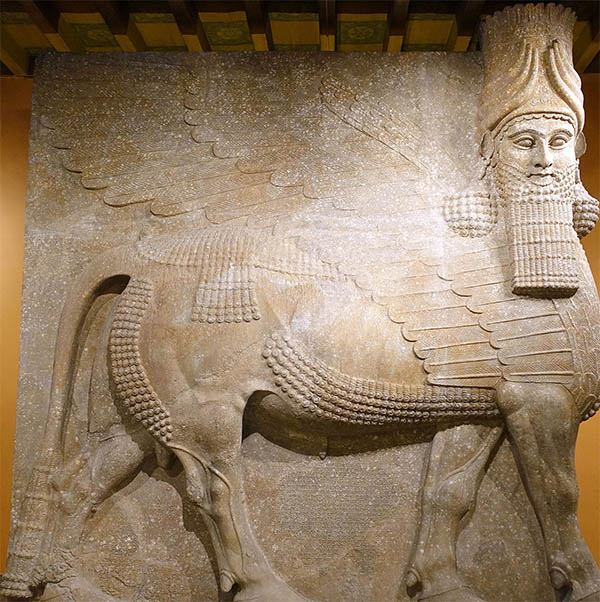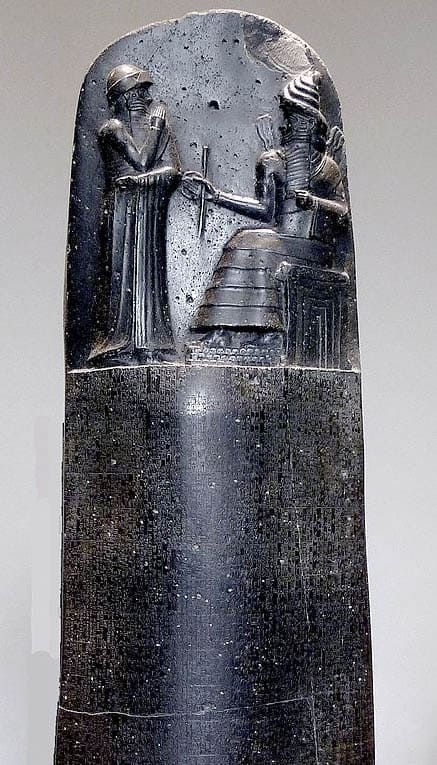3. Lamassu

In Mesopotamian culture, the lamassu were protective gods with the heads of royal humans, the bodies of bulls or lions, and the wings of birds. Much like the guardian lions, lion dogs, and dragons of China, the lamassu guarded temples and palaces to ensure no harm would come to the king and priests and to make sure prayers were protected.
The faces of the lamassu (and there are a number of them still in existence) are what most people associate with the appearance of Mesopotamian rulers or priests. They wear a large miter-type hat with a flat top (something like the headgear of Eastern Orthodox officials) and a long square-ended beard spun into curls. In much the same way as we think of King Tut or the Sphinx as being typical of ancient Egypt, people often associate the face of the lamassu with the rulers of Mesopotamia.
Most of the surviving lamassu figures are large and imposing – they were supposed to be, as they were the guardians of the temples and the gateways to the gods. The most famous pair of lamassu, at Sargon II’s temple at Khorsabad in northern Iraq, stand much higher and wider than the people. Another interesting fact about these bull- or lion-bodied guardians is that they often have five legs.
Size of this preview: 800 × 597 pixels. Other resolutions: 320 × 239 pixels | 640 × 478 pixels | 1,024 × 764 pixels | 1,072 × 800 pixels.
4:The Stele of Hammurabi

By carving his laws on this stele, Hammurabi was also making a statement that would be remembered well into the future. Hammurabi was declaring that the law should not be arbitrary and made on a whim. Although a work of government, the stele has since taken on an aspect of art, largely due to its use of cuneiform.
Cuneiform, meaning “wedge shaped” in Latin, was one of the earliest writing systems in history. It began around 6000 years ago as a series of pictograms and developed into a wedge-shaped or triangular alphabet for exactitude and understanding.
Over time, artifacts from Babylonia and Mesopotamia engraved with cuneiform have been considered works of art. From the late 19th century through today, neo-primitive artists will include cuneiform writing in their work to add atmosphere or meaning.

.jpg)



0 Comments